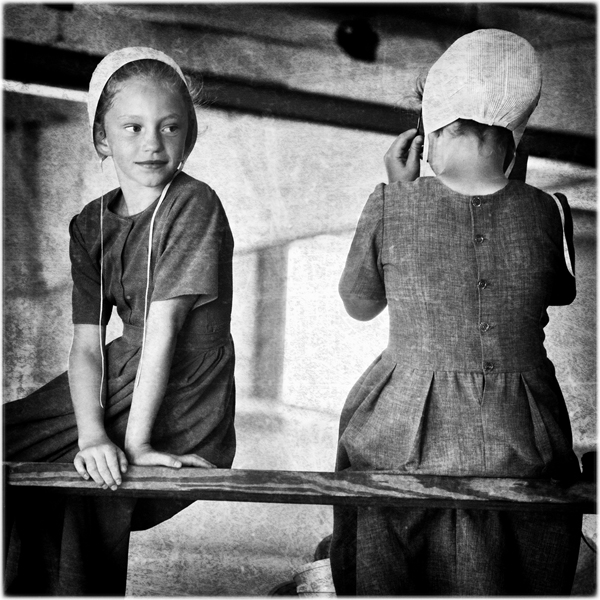Even if the Amish are known in the entire world as an old picture from the past, very few people know their true nature. Despite entire buses full of tourists invading in some of the villages, they have always know to preserve their ancestral rules for living.
The ideal image like « The Little House on the prairie » is the one which stands out first. However, a deeper immersion into a community from Pennsylvania or Ohio allows you to dive in scenery which has been left behind since more than a century. A universe without electricity, without motors, made of a simple and rustic life where farming, livestock and religion are the only mainstays of a rudimentary life, where the simple fact of making a phone call to a distant relative takes on titanic proportions.
However, spending several days close to these men and women. The charm works immediately. The simplicity, contemplation, the wish of a previous world where solidarity and sharing are essential, where values have a real content and not the bodywork form or the swimming-pool size, where “having some time together” has its real significance. This requirement in simplicity goes straight to your heart and plunges you in abyss thoughts.
Are they in truth? Did we get lost in a materialist society, consumerist and technologic where appearance means more than reality? Sharing their charity fair meal, their trading venues like the market places, the public auctions – but never their intimacy, preserved of outside pollution – one feels serenity, contentment, satisfaction to which we would easily slip into silently.
Nevertheless, once the magic of the places passed, back to everyday life, in front of my pictures, then a doubt takes over me. Seeing all these children’s faces, an impression arises. A kind of prevailing melancholy, a general restlessness, like a deep meditation. Framings coincidence? Unlucky circumstances? Distorted vision? Total author’s subjectivity? Or is it a real youth soul-searching in doubt? Why so much discrepancy between the spent moment and the image review?
Perhaps the simple pace of “natural” education, at the rate of the sun, the horses, the harvests, the family’s clocks simple tick-tock, of paces on the way to school leaves more space to Amish children to stroll in their heads, to forget and lose themselves in their thoughts?
Who can truly say that? At the age of 16, adolescents are confronting their surrounding world through the “Running Time Period”, a few-years unleash slice of life where everything is allowed, included excesses, in order to choose their future consciously, the horse-drawn plough or the IPads. 90 percent of the time, “lost sheep” return back to their community. True motivation or incapacity to acclimatize themselves? They are the only ones to know that…






















